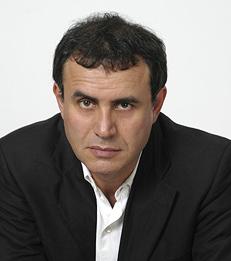Opinion
The Dangers for the Eurozone Are All Too Real.
—

By Nouriel Roubini
Faultlines in the eurozone are resurfacing. In response to a sharp widening of sovereign bond yield spreads in Italy and other states, the European Central Bank held an emergency meeting on Wednesday. Its governing council decided to work on designing a new facility to address “fragmentation risk”, or the idea that the effect of monetary policy on the 19 nations in the eurozone may vary widely, with potentially destabilising consequences.
The dangers are real. Italian long-term yields have surged from below 1 per cent at the start of the year to above 4 per cent in recent days. But fragmentation risk is not the only serious problem for the ECB. In recent months, inflation in the eurozone has also surged above 8 per cent. This is at a similar level to the US, but, unlike the Federal Reserve, the ECB plans to wait until next month to start raising interest rates. This lag behind the Fed and other central banks is due to a variety of reasons. There is more slack in labour and goods markets in the eurozone than the US as the area’s recovery from Covid-19 has been more sluggish.
Supply shocks, including soaring energy prices and those of other commodities following the Russian invasion of Ukraine, are a greater factor than excessive aggregate demand in driving eurozone inflation. Wage growth is more modest than in the US, and the rise in core inflation is smaller.
Read the full Financial Times article.
___
Nouriel Roubini is a Professor Emeritus of Economics and International Business and the Robert Stansky Research Faculty Fellow.
The dangers are real. Italian long-term yields have surged from below 1 per cent at the start of the year to above 4 per cent in recent days. But fragmentation risk is not the only serious problem for the ECB. In recent months, inflation in the eurozone has also surged above 8 per cent. This is at a similar level to the US, but, unlike the Federal Reserve, the ECB plans to wait until next month to start raising interest rates. This lag behind the Fed and other central banks is due to a variety of reasons. There is more slack in labour and goods markets in the eurozone than the US as the area’s recovery from Covid-19 has been more sluggish.
Supply shocks, including soaring energy prices and those of other commodities following the Russian invasion of Ukraine, are a greater factor than excessive aggregate demand in driving eurozone inflation. Wage growth is more modest than in the US, and the rise in core inflation is smaller.
Read the full Financial Times article.
___
Nouriel Roubini is a Professor Emeritus of Economics and International Business and the Robert Stansky Research Faculty Fellow.
